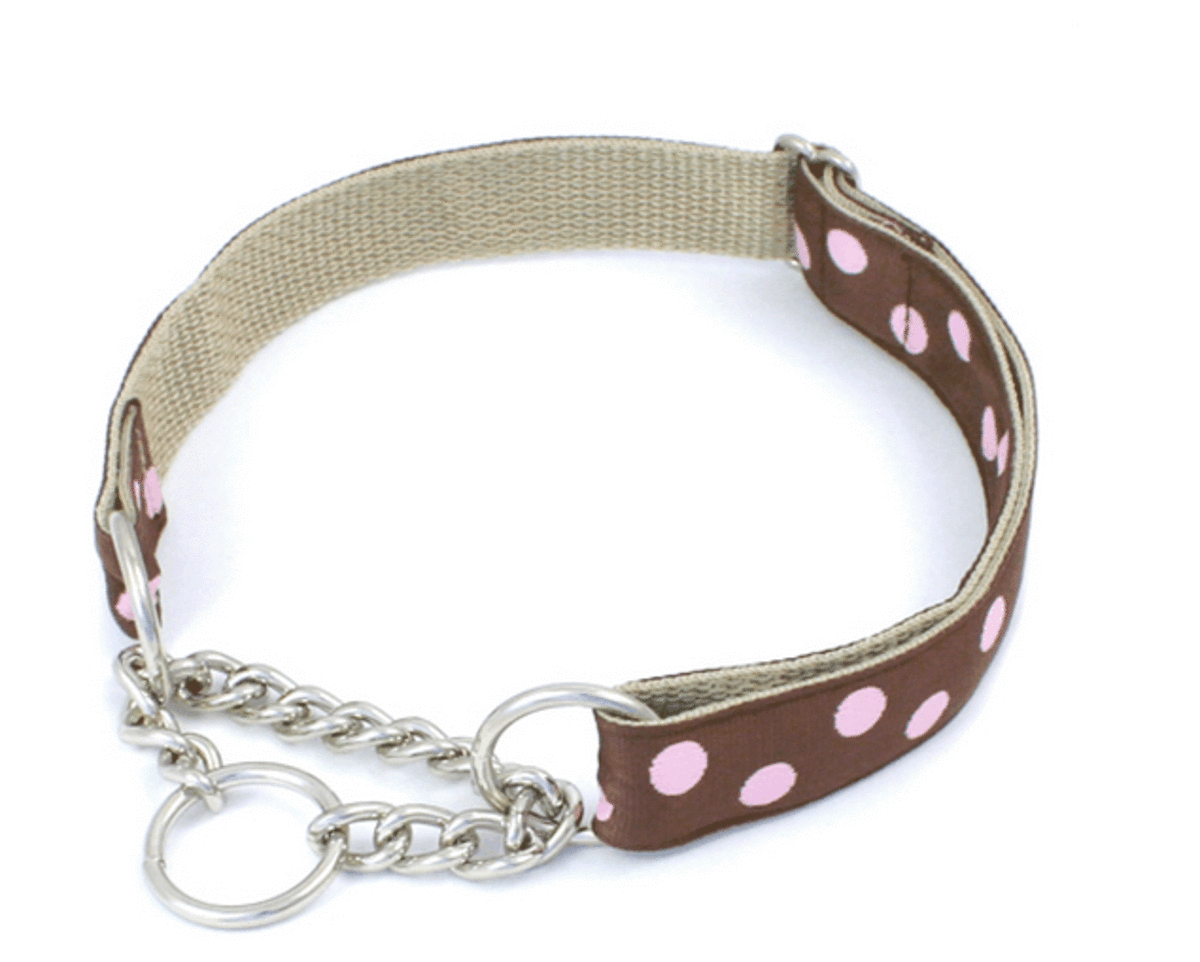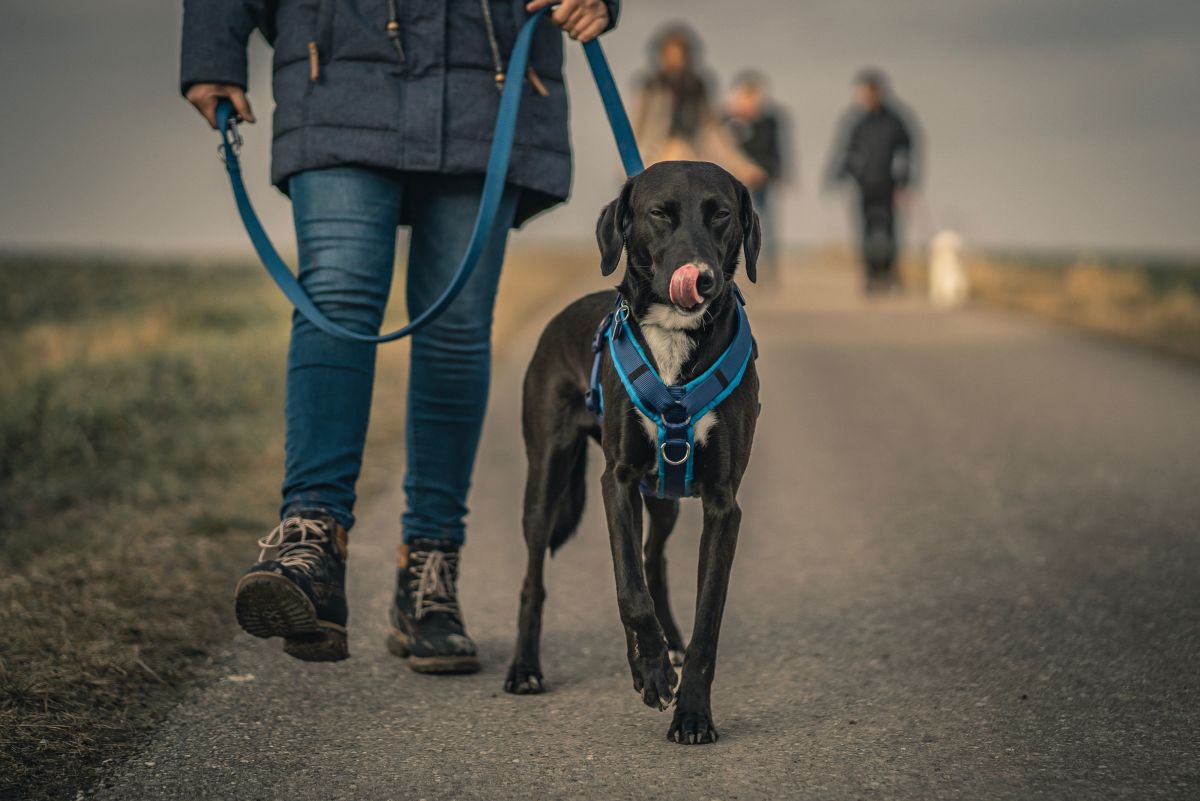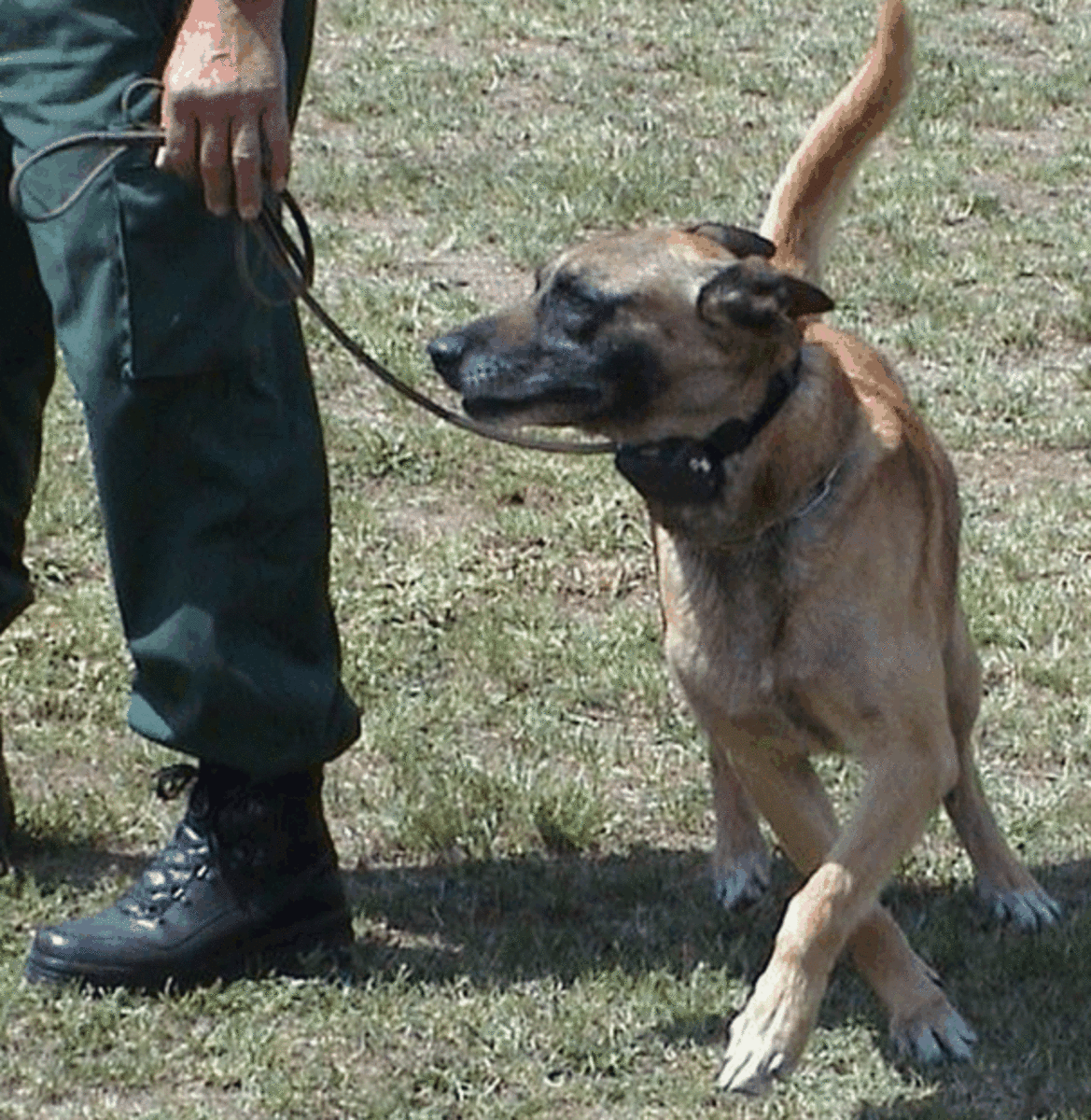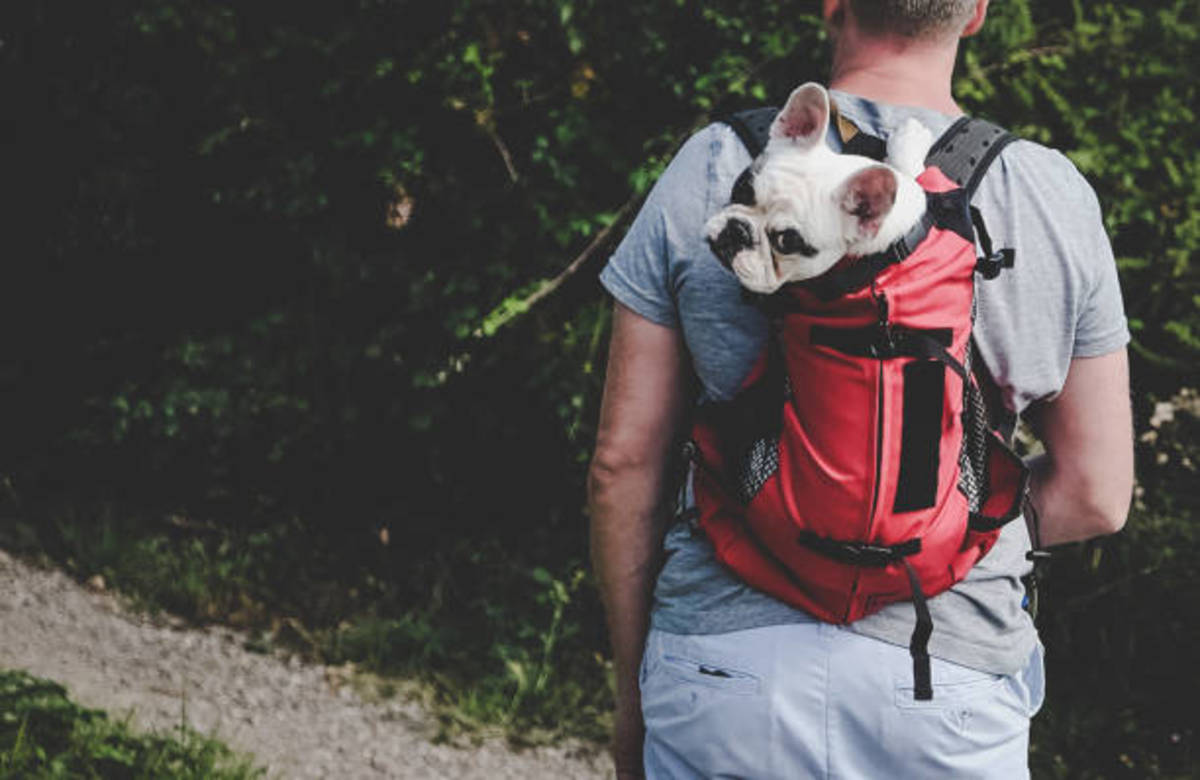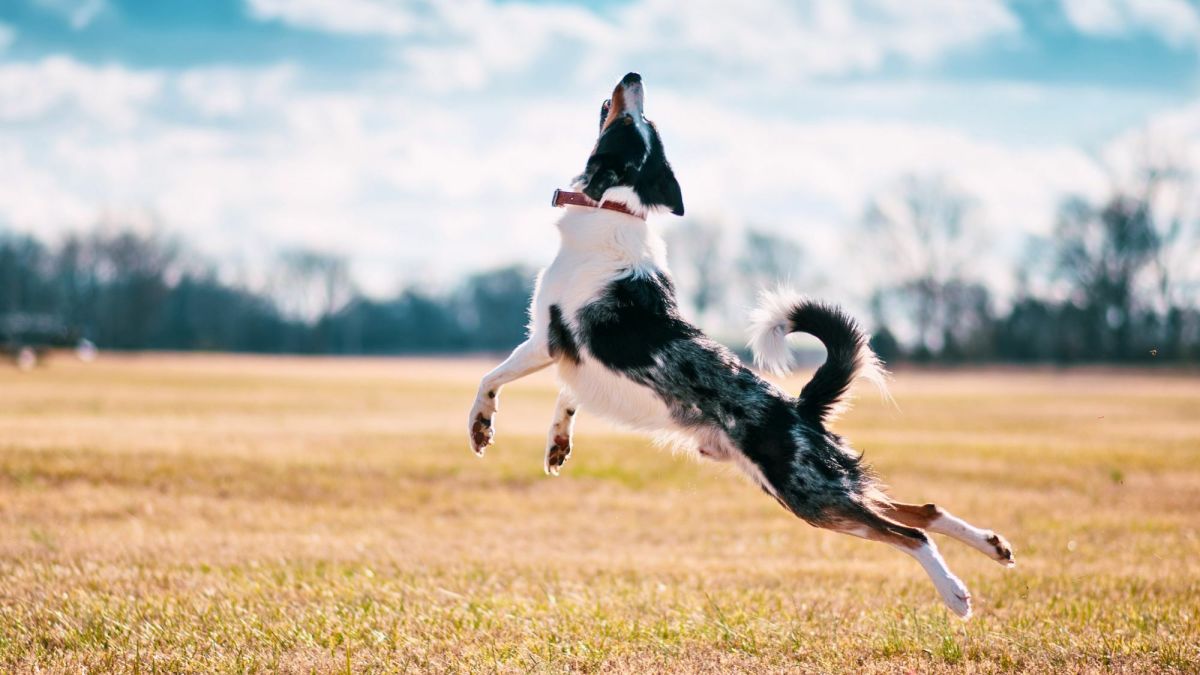All About Dog Collars
Canine Appearances & Apparel
I am guilty of buying collars based solely on aesthetic appeal. My Scottie, Maya had at least six different collars for all the seasons and a couple holidays when we'd visit family together. She pranced around proudly in her green and red stripes at Christmas, and bounded through piles of snow in a subtle powder blue and embroidered snowflakes. Different fashion-collars are fun, but what about function? There are so many options available now that it's easy to get overwhelmed. What are they all used for?
Buckle Collar
You will find this style of collar in EVERY store that sells at least some pet supplies. They fasten either with a clip (similar to a seatbelt) or metal buckle with notches. Buckle collars come in an amazing variety of colors and patterns. In large pet stores, the styles often coincide with the season, enticing dog owners to purchase new "apparel" often. These collars are functional, fashionable, and safe for most breeds.
Some breeds with narrow heads, or overweight dogs can slip out of nylon buckle collars easily. Look for other options if you're concerned about it and use this collar for identification purposes or fashion, if at all. My own Doberman is notorious for slipping a collar. I have found that a leather buckle collar works best for him. Material can make a difference. Nylon doesn't stretch, but is slippery and twists easily, allowing a dog to manuever it over his head. Leather is more stable, allows some give, and generally I seem to be able to tighten it one more notch without feeling like my dog is uncomfortable. Not to mention, leather collars and leashes never snag or fray and last a lifetime.
Slip (Choke) Collar
Slip collars are highly controversial. Dog training has evolved from it's militaristic roots in corrective punishment into an extremely effective reward based system. Slip collars are a quick-correction tool that most trainers will advise against nowadays, myself included. These collars are NOT meant to be pulled on. If your dog is a heavy puller or lunges do not use this collar. Your dog can be seriously hurt.
Martingale (No-Slip) Collar
These are like slip collars with a safety catch. They look very similar to a regular buckle collar with the addition of an extra loop located at the leash ring. The loop lays open and flat so long as the leash is loose, but when your dog begins pulling it tightens and closes the gap where it connects to the rest of the collar. It shrinks the collar a few sizes, then stops when the two ends meet. It allows your dog to feel the pressure he creates when he pulls the leash taught, but prevents serious injury seen in slip collars.
The extra pressure a martingale collar creates does two things. First, it tightens enough your dog cannot slip himself out of the collar. Second, it helps dogs realize they have put tension on their leash in a safe way. Dogs prone to pulling have often been unwittingly trained to do so by their owners. To reverse-train this behavior, dogs must be aware of when they pull and also (this is the most important part) NOT get rewards for pulling. That is, you should stop in place and wait for your dog to give you some slack, literally. (see How to Stop Leash Pulling) Martingale collars make it easier for both dog and owner to see when there is leash tension, so you don't accidentally reward the behavior by continuing to move forward.
Prong (Pinch) Collar
The idea behind this training device is the same as a slip collar. It's meant to be used with a quick tug to correct, or remind the dog his action is inappropriate. Like traditional martingale collars, they often have a chain loop to protect the dog's neck from being crushed. The prongs can still cause injury on their own and are likely to become snagged on items if left on an unsupervised dog. Because these collars are used for punishment based training, I don't recommend them.
Harness
A harness is an excellent choice for a dog whose delicate size or medical condition prevents safe use of traditional collars. Breeds with bulging eyes like Shih Tzus, pugs, and sometimes Chihuahuas have shallow eye sockets. If too much pressure is put on the neck, traditional collars can cause an eye to pop out, a painful experience for both dog and owner.
A harness can also be helpful for a dog who pulls excessively. It feels different than a regular collar, so it's easier for your dog to "start over" with leash training. You can use a harness to signal there are special rules in place. This works well if your schedule is so busy you don't have time to work consistently with your dog on his normal collar. Training can take place on-harness, whereas your dog is still permitted his indulgences without it.
No-Pull Collar
I have seen two varieties of no-pull collars. Both harnesses and head collars offer owners more "control" over their dog's movement. Head collars work just as halters do for farm animals. You don't need as much strength to hold an animal's head in one place as you would holding onto his neck or body. Imagine trying to direct an untrained horse using a thick collar that rests around his neck. You'd simply be dragged around. While canine head collars like the Gentle Leader prevent this, they still require the same positive reward training all loose-leash walking does. Otherwise, your dog will quickly pick up that he can still pull on a head collar to get where he wants, if not as hard.
No-pull harnesses either restricts movement, offer a different leverage point for the owner, or put pressure on a dog's shoulders or armpits to cause discomfort when he applies tension to his leash. While this may offer an owner slightly better control than a regular harness, it won't assist further in teaching a dog not to pull.
No-pull collars are NOT a quick fix. They are very helpful in establishing new rules on a walk, but only if owners are willing to put those rules into place. You cannot simply put on the collar and expect your dog to stop pulling. These collars are an excellent tool if you have an extremely stubborn dog on your hands. Especially head collars. They give owners the ability to physically turn a dog's head. Being able to gently guide a dog's attention back so he can be rewarded can make for easier success, and that's half of any training.
The Best Choice
When it comes to collars, there is no "best." It depends on your dog. He's a special case and it's your job to evaluate what option is safest and appropriate for your situation. He's your partner, not just an animal to control.




